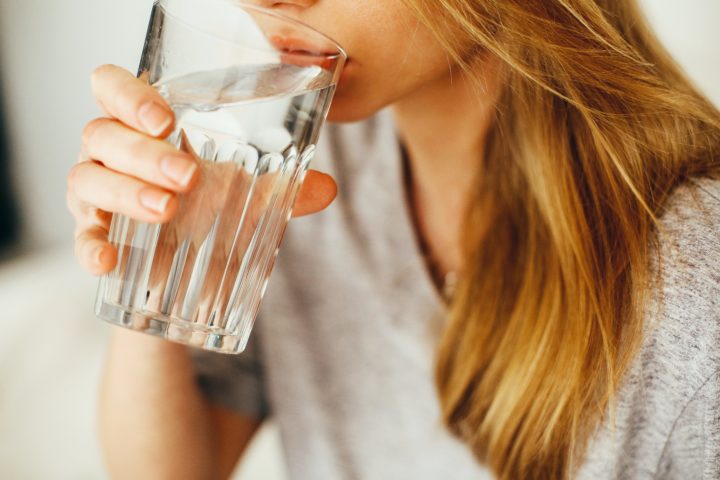Water in the United States is considered to be some of the safest in the world. You might be shocked at how many contaminants and chemicals still might be present in your drinking water, however. Drinking water varies in quality from state to state. Contaminants can also enter your water supply from the pipes in your home. This article will tell you about some of the most concerning contaminants that could potentially be present in your tap water, and how they get into your tap water.
How Do Contaminants Get Into Your Tap Water?
Small amounts of chemicals like chlorine and fluoride are always present. They provide protection from other contaminants in small amounts. These chemicals enter your water through water treatment to remove any harmful chemicals or pollutants, through local authorities, and through commercial water treatment. Other naturally occurring chemicals like arsenic and nitrate can also be found in your water, though usually only in trace amounts that are not harmful.
In rare cases, tap water can become polluted with harmful chemicals due to leaching from the ground into your pipes, or because of chemical build-up in your pipes themselves. An example of this is lead, which can enter your water supply during transit through corroded pipes.
What Is in Your Water?
Chlorine
Chlorine is used during the water treatment process to eliminate bacteria and preserve your water on its journey from the treatment facility to your tap. Chlorination is generally safe, though in rare cases it can react with naturally occurring compounds and create harmful by-products. To prevent this from occurring, chlorine is monitored regularly and tests are taken. Through regular testing, authorities can ensure that the levels of chlorine present are small. Chlorine presents very few health risks, though it can impart a strong chemical smell to drinking water.
Limescale
Limescale is something everybody finds in their sink, bath, or shower at least once. It can also be found inside kettles, espresso machines, and on taps. It is a chalky deposit composed of magnesium carbonate and calcium, formed when ‘hard water’ becomes heated. The hardness of your water varies entirely upon where you are in the United States. Some states have harder water than others do. Limescale can cause your boiler to have to work harder to heat your home, which in turn costs you more money on your energy bills.
Fluoride
Fluoride is found in most water supplies and is completely normal. Like chlorine, fluoride levels are regularly tested to ensure that it does not exceed its maximum allowable level. In some states, however, fluoride is added in. Scientifically speaking, fluoride has been proven to reduce tooth decay, which is why in some places fluoride is intentionally added into the water supply. Some argue that fluoride harms you and your teeth, and it is a controversial subject. In fact, fluoride has been a source of contention for many years. It is generally accepted by scientists to be good for human health in small quantities, though it can be very bad for you in large amounts. If you’re unsure about the effects of fluoride in your water supply on your teeth, it’s best to seek advice from experts like this reliable dentist in Harrisburg.
Lead
Lead is toxic and can leach into the water through old piping. In areas with ‘soft water’ lead content is usually higher (or more likely). In ‘hard water’ areas, the limescale can actually act as a barrier, preventing lead from entering into the water supply. In areas where lead content is to be expected or is more likely, the water is usually treated with phosphoric acid which can eliminate lead content. Lead can be very harmful to health and can cause a number of health conditions. If a lead outbreak did occur in your water supply, your water supplier would inform you.
Microplastics
Microplastics contaminate over 70% of tap water samples in Europe. Microplastics come from clothes made from synthetic fabrics, tires, cosmetics, and paint. A single synthetic jacket can shed over 200,000 microplastics in one wash. Scientific research is still being undertaken on how harmful microplastics can be, though what has been proven is that they contain and absorb toxic chemicals. Microplastics are also found in bottled water, beer, and salt. You can consume up to 70,000 microplastics a year just walking around and breathing. Incredible, right?
Parasites and Bacteria
Your water is treated to remove harmful bacteria and parasites, as has already been mentioned. However, outbreaks do occur rarely. Cryptosporidium, for example, has managed to find its way into public drinking water in the United Kingdom. To avoid this bacteria, residents had to boil their water, lest they face stomach cramps and diarrhea. Local authorities regularly test the water to ensure that no bacteria or germs are able to get into the water supply and to ensure that the chlorine is doing its job. If you do notice that you become sick after drinking tap water, you should ask your local authority to perform a test on your water supply.
Hormones
A large body of research suggests that Ethinyl estradiol, a contraceptive chemical, is leaching its water into water supplies. This has brought about concerns that men could be being made infertile through exposure, though this has not yet been proven. A study performed by the EPA demonstrated that water contaminated with estrogenically active substances causes the feminization of male fish, ultimately causing them to switch genders. There is no evidence at this time to suggest that that could happen to human beings, though the very presence of these chemicals is concerning.
Pharmaceutical Compounds
Pharmaceutical compounds have been found in tap water in small quantities. Some of these compounds are anti-depressants, sedatives, and by-products of cocaine. Also found in tap water are epilepsy medication, painkillers, and caffeine. These chemicals were all found in amounts that were not high enough to cause any harm, though it is still incredibly concerning that these chemicals are finding their way into the water supply. To avoid pharmaceuticals, and other chemicals listed here, you can invest in a water purifier or have your water professionally treated.
Harmful chemicals and compounds being present in the water supply is enough to cause anxiety. However, most of the compounds mentioned here are only present in trace amounts and pose no harm. Those that do are removed quickly by the authorities, so you are unlikely to be at threat of illness. Thank you for reading.
















